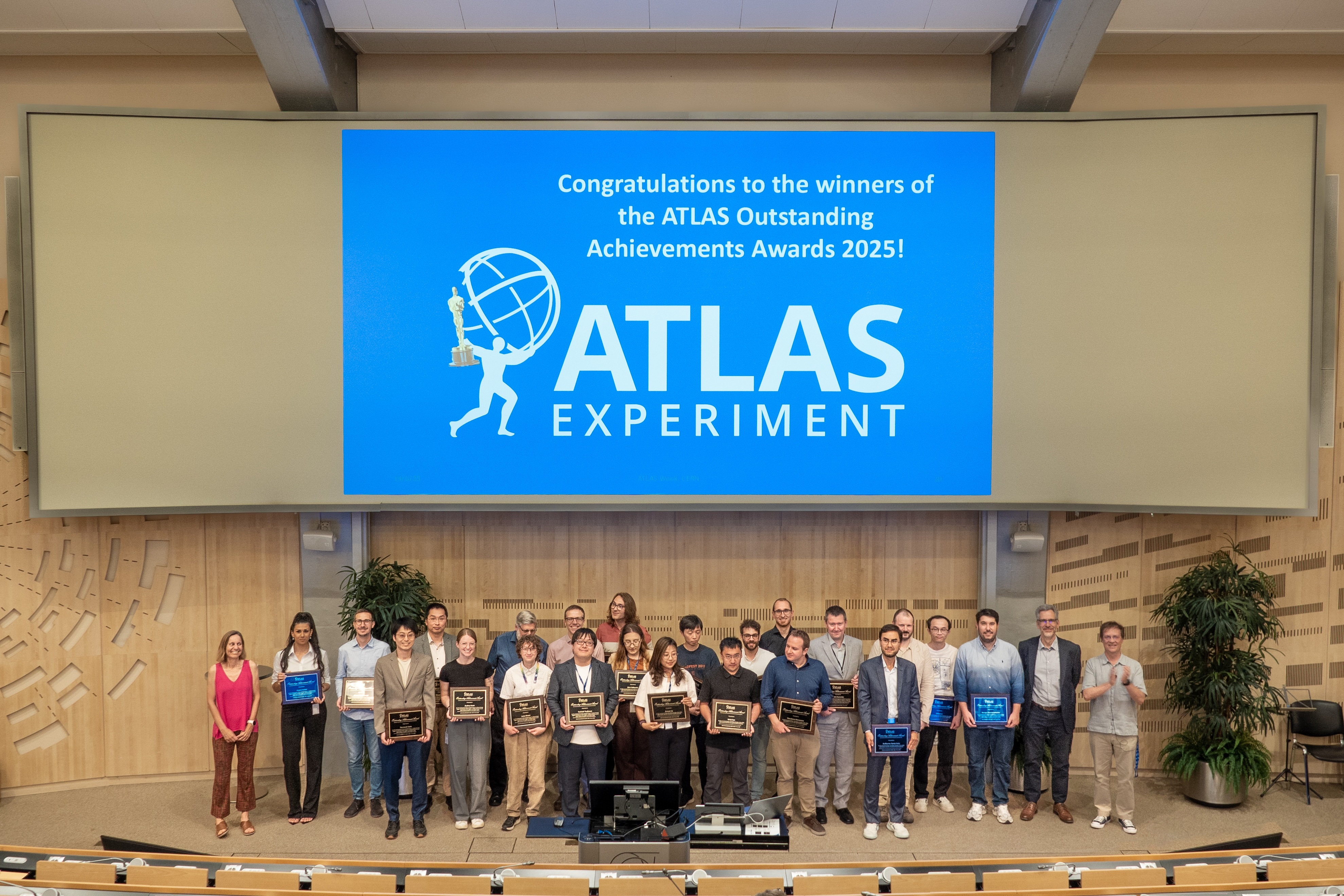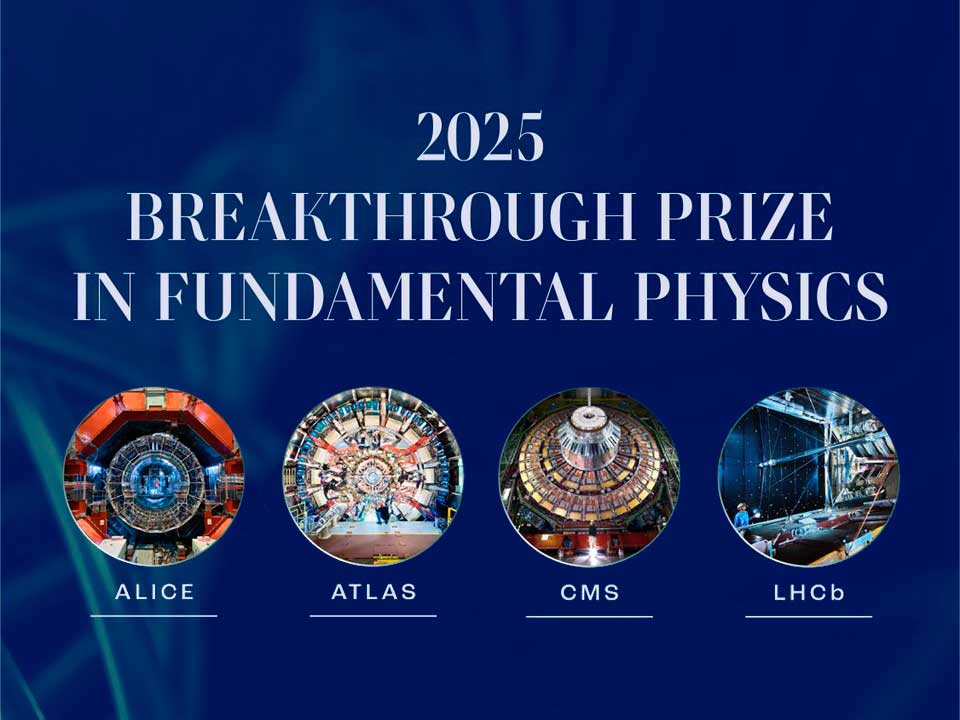In conversation with Claudia Gemme, an influential voice in ATLAS detector upgrades
15 June 2020 | By

Claudia Gemme, researcher at INFN in Genova, has had a varied career with the ATLAS Collaboration. From her work on the construction and commissioning of the ATLAS Pixel detector, to a career in physics analysis and the ATLAS Publication Committee, she now leads a key upgrade of the ATLAS detector: the ATLAS Inner Tracker (ITk).
I was not one of those kids who said, from the very beginning, I want to be a physicist. That being said, there are certain moments of my childhood which were, in retrospect, turning points. As a child, going to work with my mother gave me my first experience with physics. She was a radiologist, and would take me into the hospital dark room to watch how she developed x-ray images.
Then, in high school, I followed the news coverage about Carlo Rubbia and his Nobel Prize for the contribution to the W/Z-boson discovery. There was a lot of physics outreach being done in Italy at the time that made a big impact. If you speak to other Italian physicists of my generation, they’ll most probably say the same: this is how a lot of us got into the field. There is something very valuable about seeing your potential career in practice, and it pushed me to study physics at university.
I graduated in 1993 with a degree in theoretical nuclear physics at the University of Genova, and was looking for direction for my PhD. Fortunately, I had an opportunity to visit CERN during my Masters studies. It was a great visit and left me wondering if this could be a place for me.
Soon after, I ran into my future-supervisor Bianca Osculati. She was heading on a long walk across campus and I joined her, asking her career advice and expressing my interest in spending a few months at CERN. She was a fantastic support and invited me to apply to a PhD position in her group, working on the WA92 experiment on the Super Proton Synchrotron (SPS).
Joining Bianca’s group was a completely new experience for me. The experiment had just ended data taking, so for three years I worked solely on data analysis. I felt like I knew next to nothing about the field when I started, but I had an excellent group and role models around me.
Then my life underwent a number of big shifts. On the personal front, I had my first child while completing my doctoral studies and, at work, I moved from WA92 to the newly-formed ATLAS Collaboration. I was fortunate enough to join ATLAS right when the collaboration was developing – a great opportunity, especially for a student.

In 1998, my team suggested I shift my focus from analysis and simulations, to working in the lab on hardware. Genova was taking a leading role in the R&D and construction of the Pixel detector, and I was able to join in at an early stage of the development. I was surprised to find that I loved the work as, in university, I had found working on hardware confusing and frustrating.
The ATLAS Genova team provided an excellent education; I think I learned more in those few years than any other time of my life. I was exposed to so many experts from so many fields – physicists, technicians and engineers – with so much expertise to share. In particular, I also developed excellent synergy with the technicians, who have an incredible knowledge to share. In many respects, my role was simply to apply a formula to what they already knew.
From 2002, I was responsible for the Pixel module construction in Genova, overseeing the team there. As construction wrapped up, our work shifted to testing and then, as the detector moved to CERN, I moved with it to work on integration. By the time we finally installed the detector, in 2007, I had been with the project for almost eight years.
Those last few years were very stressful. Along with the pressures of the schedule and the large amount of challenges that had to be overcome, I was also balancing a (more important) personal project: raising my three young children. The day of final installation was thus very emotional for us all. I can really only compare the feeling to the birth of a child, albeit on a different level. But then the story continued, and I took on more responsibilities: overseeing the commissioning of the Pixel detector and becoming Pixel Run Coordinator.
Those last few years working on the Pixel detector were very stressful. Along with the pressures of the schedule and the large amount of challenges that had to be overcome, I was also balancing a (more important) personal project: raising my three young children.
When I finally returned to Genova in 2009, I ended up shifting paths to work in data analysis. This was a tough transition at first. I went from being in charge of a big team, focussed on immediate deadlines, to being by myself. Fortunately, the work was really interesting. Within a few months we had the first ionisation results using cosmic rays and then, once collisions started, one of the very first ATLAS plots was from our team. I still keep its CERN Courier write-up in my office.
Having experience in both analysis and hardware turned out to be a boon for my career, leading to my appointment on several review boards and on the ATLAS Publication Committee. While I found both areas are very satisfying to work in, data analysis is not as tangible. Though conferences can give you that boost to complete your analysis, the deadlines in hardware are stricter. If a system needs to be online tomorrow, you don’t go home until you are done. Although at times a bit stressful, I found this really rewarding, as you feel that ATLAS relies on you to operate. I like to feel the pressure and solve problems – and hardware work provides both of those things.

Nevertheless, for quite a few years I was able to just enjoy the success of the detector and study its data. I tried to stay out of upgrade work, with just some participation in R&D and in the newly formed ITk collaboration. My strategy worked until 2015, when I was asked by ITk project leader Steve McMahon to co-chair the ITk layout taskforce. Little did I know this was his way of subtly bringing me back into the fold. From there, I was also involved in editing the Technical Design Reports and, in 2017, Steve asked me to become his deputy. Just as suddenly as I had left, I was back to working on hardware almost full time.
As the ITk project leader, I’d say my main activity is dealing with day-to-day problems. I do not assume I can follow – nor do I think I should – every single detail of the project. Instead, I trust that the level of coordination below me has a strong understanding of the details and has handled them competently. My role is to have a deep enough knowledge to understand the gravity of any problems, and monitor that the flow of information is working correctly, not only towards me, but also within the teams.
It is in the very nature of our project to have a lot of problems. Our work is at the frontier of the field and every action we take is charting new waters. It never goes smoothly and we have to expect setbacks as we progress. That being said, though I spend most of my time resolving problems, the majority of news is good news. But as it doesn’t require action, it can sometimes skew the way we think of our progress.
The ITk project is now entering an exciting phase, no longer focused on R&D but instead on the path to construction. This requires a shift in mentality, and I think I am perhaps more cautious than some colleagues. Our community is highly dominated by optimists, always looking to have the very best technology they can. But at some point, you need to put down the pen and start the process. I am in favour of compromise, focusing on what we can do rather than pushing for what people would like to have.
Our community is highly dominated by optimists, always looking to have the very best technology they can. But at some point, you need to put down the pen.
Keeping people motivated during construction will be tough. While it does require a lot of detailed repetitive work, it brings with it a unique set of challenges that can keep you engaged. During the Pixel detector’s construction, for example, I found some of my most interesting work in our “module hospital”, where we had to find and resolve new problems.
It will be a challenge to build the ITk – both on a technical and human level. As management, it is our responsibility to keep the motivation and focus high, while also acknowledging that the work may be tedious at times. Our project is dependent on motivation at every level – from students to coordinators to technicians – and we must ensure they feel recognised for their hard work.
It is also vital to form good, personal connections with institute teams, on whom the entire project will rely. I try to meet with people in person, to put a face on the idea of “management”. When that’s not possible – as is the case at the moment – I answer a lot of emails. It is my belief that a successful manager not only keeps their project on track, they also make people’s lives happy while they are part of the project. I try to listen and engage in one-on-one contact. Maybe I don’t always succeed, but I try!
Building a new detector is an incredible opportunity – one that I hope my younger colleagues take advantage of. I have been fortunate enough to see the ATLAS detector at every stage of its life: through R&D, production, installation and data-taking. Now, my hope is that others get to experience the same.
Aside from the professional rewards, I’ve also gained wonderful friendships. Big challenges generate strong and deep interpersonal connections that go beyond the work. I still have close bonds with the people I worked with on the Pixel detector, even if we only see each other very rarely. I have that same feeling these days when working on the ITk – like I am with a group of lifelong friends. Together, you become part of something important that not only shapes the field, it shapes the people.

ATLAS Portraits is a series of interviews presenting collaborators whose contributions have helped shape the ATLAS experiment. Discover more ATLAS Portraits here.



